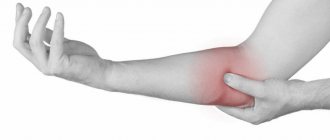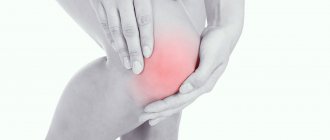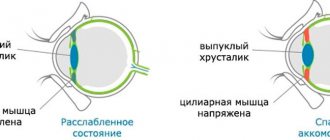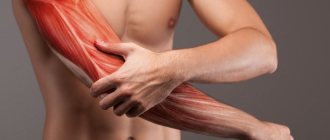The hand is a part of the human hand, which consists of the bones of the wrist, metacarpus, fingers (phalanx) and the soft tissues that are located around them. Complaints that the hands hurt are very common, since they are susceptible to injury, infection, and disease.
If you are bothered by pain in your hand, you don’t have to endure it! Contact the CELT Pain Clinic!
Pain in the left or right hand can be caused by a disease of the musculoskeletal system or nerves, and if its cause is not addressed in a timely manner, the consequences may be irreversible.
At CELT you can get advice from a specialist algologist.
Make an appointment
Causes of hand pain
Traumatic injuries
A hand bruise occurs as a result of a blow or fall and is manifested by moderate, gradually subsiding pain, swelling, and slight limitation of limb function.
Possible bruises and abrasions. On palpation, local pain is noted, the symptom of axial load is negative. All manifestations disappear after 1-2 weeks. Fractures of the II-V metacarpal bones are formed when struck with a fist or falling on a fist. Injuries of the V predominate, sometimes in combination with a fracture of the IV metacarpal bone. Injuries of the II metacarpal bone are less common, and very rare - of the III metacarpal bone. Fractures are manifested by sharp pain, which almost does not subside over time. The hand is swollen, especially in the projection of the damaged bone, and is often deformed. On palpation, a crunch and pathological mobility are determined. The function is sharply reduced.
When the first metacarpal bone is fractured, the diaphysis or base of the bone suffers. In the first case, maximum pain is found in the central part of the thenar, in the second (with Bennett's fracture) - just above the wrist joint. Bennett's fracture is accompanied by displacement of the distal fragment of the metacarpal bone and external deformation of the base of the thenar. An active grip involving the first finger is impossible; when you try to clench your hand into a fist or oppose the first finger, the pain increases sharply.
Wrist fractures are less common. Mostly the base of the hand swells. Depending on the type of fracture, the pain is localized:
- scaphoid bone - on the side of the first finger, strengthens with pressure on this finger;
- lunate bone - in the middle part of the hand, intensifies with axial load on fingers III and IV;
- pisiform bone - on the side of the fifth finger, grows when trying to bend the little finger.
Dislocations of the wrist bones are often combined with fractures and are manifested by extremely intense pain, significant swelling, and severe deformation of the hand. The functions of the hand are almost completely lost due to severe pain.
Soft tissue diseases
For de Quervain's disease (stenosing ligamentitis), painful sensations in the area of the wrist joint are more typical, but in half of the patients, aching or pressing pain also occurs in the thenar area and radiates to the thumb. At first, the pain syndrome is detected only with excessive abduction and extension of the first finger, then it begins to bother you with any movements, and sometimes persists at rest.
Aseptic tenosynovitis of the tendons of the fingers begins acutely against the background of overload, manifests itself as a constant nagging pain that intensifies with finger movements, is accompanied by limitation of movements, mild swelling, and hyperemia. As the process becomes chronic, the intensity of pain decreases; it is observed only during exercise; patients complain of a feeling of cramped hand.
Hygromas most often form on the back of the wrist joint, but can also be located on the palmar side of the hand. Initially, they are usually painless, but with active movements of the hand or pressure from a hard object, minor or moderate pain may occur. Unlike formations of other localizations, palmar hygromas are distinguished by significant density and may resemble bone outgrowths.
Hand pain
Dermatological problems
A water callus forms on the palmar surface in the area of the heads of the metacarpal bones; it is a consequence of unusual or too long work with the instrument. First, mild local pain, slight swelling, and redness occur. Then a bubble forms on the palm, the pain becomes intense, tugging, stabbing, cutting, intensifies with movements and touch. After opening the bladder, a painful wound appears.
When the wound becomes infected or microbes penetrate into the bladder through cracks in the skin, a callus abscess develops with rapidly increasing pain that takes on a twitching, pulsating character. The pain bothers you at night, intensifies with pressure or lowering the hand, and is accompanied by a slight increase in temperature and swelling of the back of the hand. When pus breaks through into the surrounding tissues, the condition worsens even more, the pain becomes diffuse, weakness is noted, and the temperature reaches febrile levels.
Infectious processes
Boils and carbuncles in the hand area are rarely formed, more often detected in men, located on the dorsal surface of the segment. They are accompanied by increasing local pain, which within a few days becomes very intense, bursting, tugging, and deprives you of sleep at night. An external examination reveals a limited purulent focus up to several centimeters in diameter, bluish-purple in color, with one or more necrotic cores.
Cellulitis of the hand is usually a complication of felon, infected wounds and abrasions. Accompanied by strong tugging diffuse pain, depriving sleep, preventing any movement of the hand. Weakness, hyperthermia, and symptoms of intoxication are noted. The swelling is more pronounced on the back side, a cushion-like compaction is visible on the palm, and the fingers fan out to the sides.
Hematogenous osteomyelitis rarely affects the bones of the hand; post-traumatic and postoperative forms of the disease are more typical for this localization. The pathology is manifested by the appearance or intensification of pain, progressive edema, hyperemia, deterioration of general condition, weakness, hyperthermia. The pain is sharp, jerking, tearing, clearly localized, so strong that the patient avoids any movement of the limb.
Arthrosis
Rhizarthrosis of the 1st finger (arthrosis of the 1st metacarpophalangeal joint) is manifested by pain at the base of the thumb. At first, the pain is short-term, appearing at the beginning of movements and after exercise. Subsequently, the duration and intensity of the pain syndrome increase. The joint is deformed, the opposition of 1 finger is disrupted, which entails a limitation of the function of the limb.
After single gross injuries or repeated microtraumas, arthrosis of the wrist joints develops with carpal reconstruction of the bone tissue. At the initial stage, patients complain of heaviness in the hands, awkwardness of the hands, short-term tingling pains without clear localization. Then the symptoms become permanent, and after the cysts break through, they are replaced by acute pain, swelling and dysfunction.
Other joint diseases
In rheumatoid arthritis, the interphalangeal joints are usually affected first, followed by inflammation in the metacarpophalangeal joints. Along with pain in the fingers, there is pain in the distal parts of the hand and wrist joint. The pain is periodic at first, then long-lasting, combined with morning stiffness. Palpation of the hands is painful; “rice bodies” are often felt. In later stages, gross deformations are revealed.
Arthritis with polymyositis is detected in 15% of patients and is characterized by pain in the joints of the hand and fingers. The pain is moderate, dull, aching, periodic, combined with swelling, redness, limitation of movements, and the deposition of calcifications. There are usually no deformations. The main manifestation of the disease is muscle pain and muscle weakness.
Hydroxyapatite arthropathy is characterized by constant dull pain that worsens at night, morning stiffness, and slight swelling of the joints. Manifestations of tenosynovitis or a course similar to carpal tunnel syndrome with shooting pain in the palm of the hand, radiating to the fingers and forearm, are possible. Deformations are not formed.
Tumors
The bones of the hands are more often affected by benign neoplasias – osteoid osteomas and chondromas. Osteoid osteomas are accompanied by sharp local pain and are less likely to be asymptomatic. With chondromas, the pain is vague, indistinct, not intense, and slowly progresses as the tumor grows. Malignant tumors of the hands are uncommon.
Neurological causes
When the nerves are damaged, the pain in the hand is burning, shooting. They often spread to other parts of the limb and are combined with muscle weakness, trophic disorders, and sensitivity disorders. Detected under the following conditions:
- Median nerve neuropathy.
Painful sensations are often causal in nature and localized in the radial half of the palm, the thenar region. - Radial nerve neuropathy.
Patients experience burning pain along the dorsum of the hand, which can radiate to the fingers, shoulder and forearm. - Ulnar nerve neuropathy.
The pain syndrome is detected along the ulnar edge of the palm, spreading from the elbow joint along the forearm to the fingers. - Carpal tunnel syndrome.
Shooting pain and tingling are noted along the palmar surface of the hand on its radial side. Irradiation to the forearm and fingers is possible.
Pain in the hands can also appear with some neurotrophic pathologies: shoulder-hand syndrome, anterior scalene syndrome, cervicocostal syndrome. Pain in the distal upper limb is characteristic of cervical osteochondrosis, intervertebral hernias, spondyloarthrosis, and other spinal diseases.
Other reasons
Occupational neuroses, some neurological and mental pathologies are accompanied by the appearance of writer's cramp - pulling, aching pain in the hand that occurs when writing, typing, combined with cramps, trembling, and weakness of the distal parts of the limb. In addition, pain in the projection of the hand is observed with the following pathologies:
- Myocardial infarction.
Chest pain often radiates into the arm, including the hand and fingers. - Post-infarction state.
Every fifth patient with a heart attack in the long-term period develops pain and paresthesia of the hand caused by neurotrophic disorders. - Vein diseases.
Thrombophlebitis, varicose veins, and postthrombophlebitis syndrome in some cases develop after intravenous injections into the veins of the dorsum of the hand.
Literature
- Berezutsky V.I. Computer mouse, keyboard and carpal tunnel syndrome // Medical Perspectives. 2021. No. 3-1. URL: https://cyberleninka.ru/article/n/kompyuternaya-mysh-klaviatura-i-sindro… (access date: 08/17/2021).
- Causes and Treatment of Wrist Pain By Jonathan Cluett, MD https://www.verywellhealth.com/wrist-pain-causes-symptoms-and-treatments-2549458?print
- Deykalo, Tolstik, Boloboshko Clinical anatomy of the hand and surgical approaches // Vitebsk: -2013, 123 p.
- Olyunin Yu.A. Osteoarthritis of the joints of the hands. Differential diagnosis with inflammatory diseases of the joints and treatment tactics. Modern rheumatology. 2015;9(4):77-82. https://mrj.ima-press.net/mrj/article/view/657/644
- Torshin I.Yu., Gromova Olga Alekseevna, Lila A.M., Limanova O.A. Systematic analysis of the molecular pathophysiology of tenosynovitis: the prospects of using chondroitin sulfate and glucosamine sulfate // Neurology, neuropsychiatry, psychosomatics. 2021. No. 2. URL: https://cyberleninka.ru/article/n/sistematicheskiy-analiz-molekulyarnoy-patofiziologii-tendovaginita-perspektivnost-primeneniya-hondroitina-sulfata-i-glyukozamina
- Yarikov A.V., Tutkin A.V., Boyarshinov A.A., Fraerman A.P., Perlmutter O.A. Carpal tunnel syndrome: clinical picture, diagnosis and modern approaches to treatment (brief review) // Medical almanac. 2021. No. 3 (64). URL: https://cyberleninka.ru/article/n/karpalnyy-tunnelnyy-sindrom-klinika-diagnostika-i-sovremennye-podhody-k-lecheniyu-kratkiy-obzor
- Instructions for use of the drug MOTRIN ® tablets //Reg. number P N002874/01// State Register of the Russian Federation. – URL: https://grls.rosminzdrav.ru/Grls_View_v2.aspx?routingGuid=868bad0c-d10e-47a9-b9d8-2595d9a01ac7&t=
- A set of exercises for the prevention and treatment of rheumatoid arthritis of the hands. Author's technique N.K. Novikova/M.-2021// Ministry of Health of the Russian Federation Federal State Budgetary Institution "National Medical Research Center for Therapy and Preventive Medicine" https://gnicpm.ru/wp-content/uploads/2020/05/kompleks-uprazhnenij-kistej- ruk-book.pdf
- Jung KS, Jung JH, Shin HS, Park JY, In TS, Cho HY. The Effects of Taping Combined with Wrist Stabilization Exercise on Pain, Disability, and Quality of Life in Postpartum Women with Wrist Pain: A Randomized Controlled Pilot Study. Int J Environ Res Public Health. 2021 Mar 30;18(7):3564. doi: 10.3390/ijerph18073564. https://pubmed.ncbi.nlm.nih.gov/33808137/
- Outpatient aspects of managing patients with articular syndrome: educational method. allowance / I. L. Mesnikova. – Minsk: BSMU, 2007. – 46 p. ISBN 978–985–462–675–8.
- Treatment and prevention of osteochondrosis A.A. Pilipovich// General Medicine 2. 2015 - pp. 15-22
- Rodomanova, L.A. Prevention of ischemic contractures of the hand after severe traumatic injuries: a manual for doctors / L.A. Rodomanova, D.I. Kutyanov, K.S. Melikhov. – St. Petersburg. : RNIITO im. R.R. Vredena, 2013. – 24 s
- Stacy, Monica, “Assessment of Antebrachial and Carpal Muscle Activity During Smartphone Use: is “Selfie Wrist” a Real Phenomenon?” (2020). Honors Theses. 1339. https://egrove.olemiss.edu/hon_thesis/1339
- Shehab, Ramsey, and Mark H Mirabelli. “Evaluation and diagnosis of wrist pain: a case-based approach.” American family physician vol. 87.8 (2013): 568-73. https://www.aafp.org/afp/2013/0415/p568.html
- Sadokha K.A., Golovko A.M., Krotov V.V. Cervical compression radiculopathy // Medical news. 2021. No. 3 (294). URL: https://cyberleninka.ru/article/n/sheynaya-kompressionnaya-radikulopatiya
- A systematic approach to a painful wrist. R Wang, J Reed, J Leone, M Bhandari, J K Moro. Canadian Journal of Diagnosis 18 (8), 86-97, 2001
Diagnostics
The causes of pain are determined by orthopedic traumatologists. To make a diagnosis, the results of a survey, physical examination, instrumental and laboratory techniques are used. May be assigned:
- X-ray of the hand.
Performed in 2 or 3 projections, it makes it possible to diagnose fractures, dislocations, arthrosis, arthritis, osteomyelitis, and neoplasms. - CT scan of the hand.
More informative when studying solid structures. Recommended for complex fractures and fracture-dislocations, arthritis, arthrosis, osteoporosis. Allows you to accurately localize the area of damage, assess the nature and extent of the pathological process. - MRI of the hand.
Indicative when studying soft tissue formations. It is prescribed to study the condition of muscles, ligaments, tendons, blood vessels, and nerves. It is used for tendinitis, arthrosis, arthritis, purulent processes, and carpal tunnel syndrome. - Electrophysiological techniques.
They are used for neurological causes of pain in the hand to determine the level of nerve damage, assess nerve conduction, and the condition of muscle tissue. - Lab tests.
They are performed to identify signs of inflammation, specific markers, assess the activity of various organs in systemic pathologies, and study the structure of tissue during histological or cytological analysis.
To make an accurate diagnosis, an examination by a specialist is required.
Why do my hands hurt?
To answer this question, you need to undergo a competent and comprehensive diagnosis at the Alan Clinic Center for Neurology and Orthopedics, which, with its comprehensive approach to identifying joint problems, will help establish your diagnosis. It includes the following research methods:
- consultation with a specialist;
- special orthopedic tests;
- dynamic active and passive tests;
- local palpation examination of damaged joints;
- assessment of the condition of the musculoskeletal system, posture, gait, uniform distribution of load on joints, range of motion, stability and strength of the joint;
- making and explaining the diagnosis;
- selection of individual complex motivated treatment.
If necessary, the doctor may also prescribe:
- MRI;
- Ultrasound;
- X-ray;
- lab tests;
- diagnostic puncture of the joint.
Treatment
Help before diagnosis
Fractures and dislocations are fixed with a splint and cold is applied. For all injuries and diseases accompanied by swelling of the limb, an elevated position of the hand is recommended. For intense pain, an analgesic is given. In most cases, pain decreases with rest, so patients are advised to reduce physical activity (except for cases where the pain goes away with movement). In case of increasing acute pain, hyperthermia, or intoxication, an urgent consultation with a doctor is indicated.
Conservative therapy
For dislocations and fractures, local anesthesia, reduction, and fixation with a plaster cast are performed. Patients with injuries and diseases of the hand are prescribed:
- Protective mode.
The patient may be recommended immobilization with a plaster cast or scarf, the use of orthoses, and load limitation. - Drug therapy.
For arthritis, arthrosis, and some other pathologies, NSAIDs are used, for infectious processes - antibiotics, for neurological disorders - neurometabolites. If intense pain persists, blockades with glucocorticoids are performed. - Non-drug methods.
They provide massage, exercise therapy, physiotherapeutic procedures, including electrophoresis, UHF, and mud therapy. Laser therapy, magnetic therapy, and other techniques are successfully used.
Prevention
The following tips will help you prevent wrist injuries and pain:
- regularly perform exercises to strengthen your wrist muscles;
- when the first symptoms of discomfort in the wrists appear, stop or modify physical activity on them;
- grab objects with your whole hand; grasping only with your fingers harms your wrist;
- when working with vibrating tools, use special gloves that support the hand, and also use vibration-absorbing pads;
- Use wrist guards when playing sports;
- Every hour of working at the computer, take 5-10 minute breaks, squat, stretch your fingers and shake your hands; To prevent falls, wear comfortable, stable shoes,
- Refrain from lifting heavy objects - it is better to return several times to move the load in parts.
It is unacceptable to self-medicate wrist pain without a doctor’s prescription!
When and how to diagnose the disease
It is necessary to recognize any of the diseases in time, especially with acute manifestations of pain, it is necessary to provide first aid. Any illness accompanied by pain in the wrist area is characterized by specific signs, which are often enough to make a correct diagnosis for a professional.
It happens that the clinical picture is blurred and it is difficult to diagnose the disease. In such situations, modern additional research is used:
- radiography,
- general and detailed blood test,
- puncture,
- magnetic resonance imaging.
How to treat hand joints?
All existing treatment methods, both ultra-new and traditional, which the Alan Clinic Center for Neurology and Orthopedics uses in its work, are the safest and exclude surgical intervention.
The treatment process is always a comprehensive program with an individual approach to each of our patients. These treatment methods, consisting mainly of non-drug methods, are available not only to ordinary patients, but are acceptable for the treatment of infants, pregnant and lactating mothers.
We have at our disposal the following methods:
- Manual therapy
- Osteopathy is treatment done by a doctor, with a gentle effect on the musculoskeletal system, nervous and vascular systems, and internal organs.
- Medical massage
- Acupuncture - exposure to biologically active points with microneedles.
- Laser reflexology is a painless effect on reflexogenic zones and points.
- Tsubotherapy is a gentle effect on the reflex points of the body.
- Pharmacopuncture is the introduction of medicinal drugs of natural origin to the source of the problem.
- Plasma therapy is the introduction of the patient’s own purified blood into the site of the disease.
- Isometric kinesiotherapy - individual gymnastic techniques/exercises, according to indications, with elements of joint massage.
- Kinesiotherapy using the Exart installation
- Kinesio taping
- Ozone therapy is treatment with active oxygen.
- Physiotherapy
- Physiotherapy with enzyme preparations
- Medical droppers
- Hirudotherapy - treatment with leeches.
- Botulinum therapy is treatment with botulinum toxin.
- Intra-articular injection of synovial fluid endoprostheses
- Intra-articular blockades
All methods are recognized by official medicine, and doctors using them have appropriate certificates. The decision on the need to use certain medications during the course of treatment is made by the doctor, based on the complexity and severity of the disease, concomitant diseases, as well as the diagnosis.
Complications after tendinitis
Like any other disease, tendon tendinitis can have complications. It is not difficult to avoid them if you start the right treatment on time. However, it may happen:
- tissue ruptures;
- chronic course of the disease, which is accompanied by constant pain;
- processes of bone tissue proliferation, which lead to inflammation of various types.
Timely examination by a doctor and compliance with all his instructions will minimize the likelihood of complications.
Symptoms - what are they?
Symptomatic manifestations are determined by the specific ailment that led to wrist pain. The most common manifestations include situations when:
- palms and hands become swollen and numb;
- the affected area burns and itches;
- fingers tremble and tingle, there is a sensation of “goosebumps”;
- The pain intensifies at night or is provoked by excessive physical activity;
- fingers turn out to be weak for simple manipulations of grasping a simple, light object;
- limited movement is felt in the wrist area of the hand.
Such manifestations of the disease are more rarely observed when:
in general, your health worsens and your temperature rises, accompanied by muscle weakness;- redness of the skin of the hands is observed (mainly observed with injuries);
- the hand is in an unnatural position. The consequence of a dislocation may be the presence of articular instability of the joint;
- subcutaneous hematoma, which is often caused by an open fracture;
- there is severe pain during flexion and extension;
- joint destruction is observed;
- it is impossible to perform simple manipulations with the affected hand;
- there is shortness of breath, pain in the chest and heart, tingling, burning and itching in the arm.
The above manifestations are the most common. They may appear in both acute and chronic pain syndrome of the wrist joint. The exact clinical symptoms are determined by the specific disease causing the pain.








